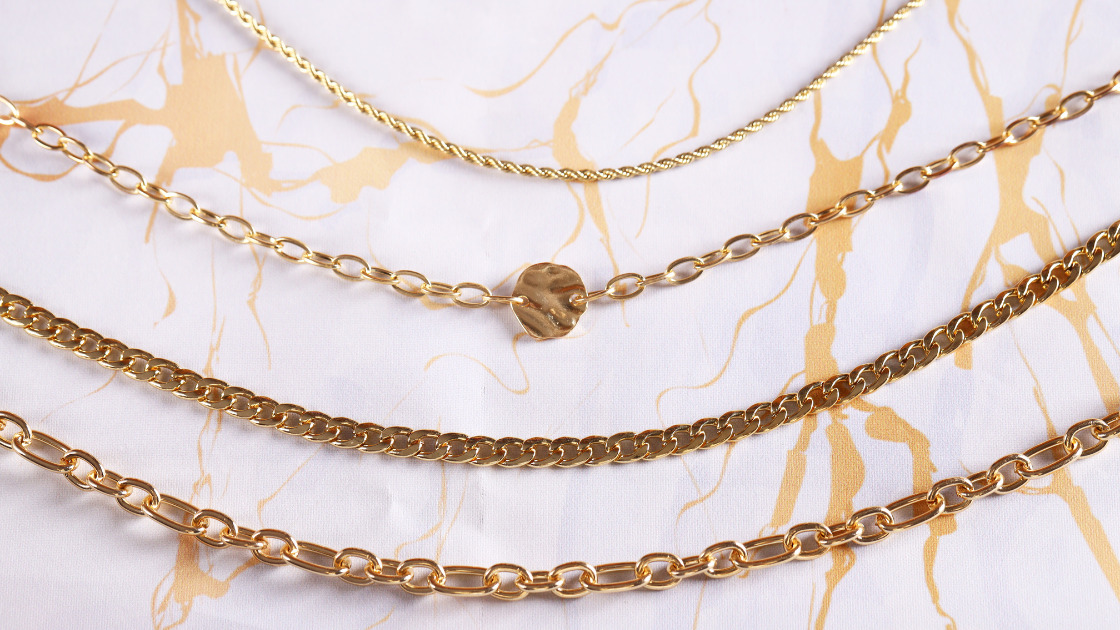The Art of Layering: Combining Necklaces and Chains
Jewelry is not just an accessory; it’s a personal expression of your style, a reflection of your personality, and a story waiting to be told. While a single necklace can make a stunning statement, there’s an art to layering necklaces and chains that takes your jewelry game to the next level. It’s a delightful dance of mixing and matching, creating a look that’s uniquely yours. In this exploration of necklace layering, we’ll dive deep into the world of jewelry, uncovering the secrets to mastering this art form.
The Foundation: Starting with a Solid Base
Like any masterpiece, a well-layered necklace begins with a strong foundation. Think of this foundation as the canvas upon which you’ll paint your necklace masterpiece. Your base necklace or chain should be something you absolutely love and want to showcase as the focal point of your ensemble.
This foundation piece can take many forms, from a simple and classic chain that complements any outfit to a pendant necklace with deep sentimental value. It might be a piece that’s been passed down through generations or one that holds a special memory. Whatever it is, choose it with intention because it sets the tone for the entire composition.
Variety in Lengths: Creating Visual Interest
One of the fundamental principles of successful necklace layering is the variation in lengths. Imagine the harmonious interplay of a symphony’s instruments—each note unique yet contributing to the overall melody. Similarly, each necklace in your layered ensemble should be slightly shorter or longer than the one next to it. This contrast in lengths prevents tangling and allows each piece to shine independently.
To achieve this tiered effect, consider starting with a choker or collar necklace as your shortest layer. These necklaces frame the neckline and create a solid base. On top of your choker, add a necklace with a slightly longer chain, and then another with an even longer chain. This tiered approach draws the eye downward, adding depth and dimension to your overall look.
Mixing Metals and Textures: Embracing Contrast
Don’t be confined by convention; embrace contrast by mixing metals and textures. The interplay of different metals and textures adds depth and character to your layered ensemble.
For instance, you can experiment with gold, silver, rose gold, or even more unconventional metals like brass or copper. Mixing these metals can create a captivating contrast that elevates your look. The key is to create a sense of unity amid the contrast. You might choose a common theme, such as geometric shapes or nature-inspired elements, to connect your varied pieces.
Furthermore, explore different chain styles and textures. Delicate, dainty chains can coexist harmoniously with chunky, bold chains. The juxtaposition of these elements adds a dynamic quality to your layered look, making it more visually intriguing.
Telling Your Story with Necklaces and Chains
One of the most beautiful aspects of necklace layering is the opportunity to add personal touches that resonate with you. Incorporate pieces that hold sentimental meaning, whether it’s an initial pendant, a birthstone necklace, or a symbol that carries a special significance in your life.
Each addition to your layered ensemble tells a unique part of your story, making your jewelry not just a fashion statement but a reflection of your life’s journey. Every time you glance in the mirror or feel the weight of a pendant against your chest, it’s a reminder of cherished memories, aspirations, and the essence of who you are.
Striking the Right Proportions
While the art of layering encourages mixing and matching, balance is key to avoid overwhelming your neckline. You don’t want your layered necklaces to compete for attention; rather, they should complement one another.
A good rule of thumb is to maintain symmetry. If you’ve chosen a bold pendant as your base, balance it with simpler, complementary chains for the upper layers. This ensures that the focal point remains clear, allowing each piece to shine in its unique way.
Conversely, if you’ve started with a delicate chain as your foundation, you can experiment with bolder, more intricate pieces for the upper layers. This adds complexity and visual interest without overpowering the ensemble.
Trusting Your Instincts with Necklace Layering
While there are guidelines to necklace layering, remember that fashion is an art, not a science. The most important rule is to trust your instincts and embrace your individuality. The beauty of this art form is that there are no hard and fast rules. What works best is what makes you feel confident and authentic.
Experiment with different combinations, take risks, and don’t be afraid to break a few “rules” if it means achieving a look that feels uniquely you. After all, fashion is a form of self-expression, and your jewelry should be a reflection of your personality and style.
A Canvas of Expression
In conclusion, the art of layering necklaces and chains is a creative journey that allows you to paint a canvas of expression around your neck. It’s a form of self-expression, a reflection of your personality, and an opportunity to celebrate the stories that make you, you. So, dive into your jewelry collection, start experimenting, and let your creativity flow.
The art of necklace layering is a beautiful way to make your fashion statement truly your own. With a strong foundation, a variation in lengths, a mix of metals and textures, personal touches, a sense of balance, and an embrace of individuality, you can create layered ensembles that not only look stunning but also tell your unique story.
As you layer each necklace, you’re not just adorning yourself; you’re creating a masterpiece of self-expression that speaks to the world. Enjoy the process, cherish the memories, and wear your layered necklaces with pride. Also, if you have a torn necklace or chain or you want to repair, contact Rick Terry Jewelry Today for your chain repair needs!
